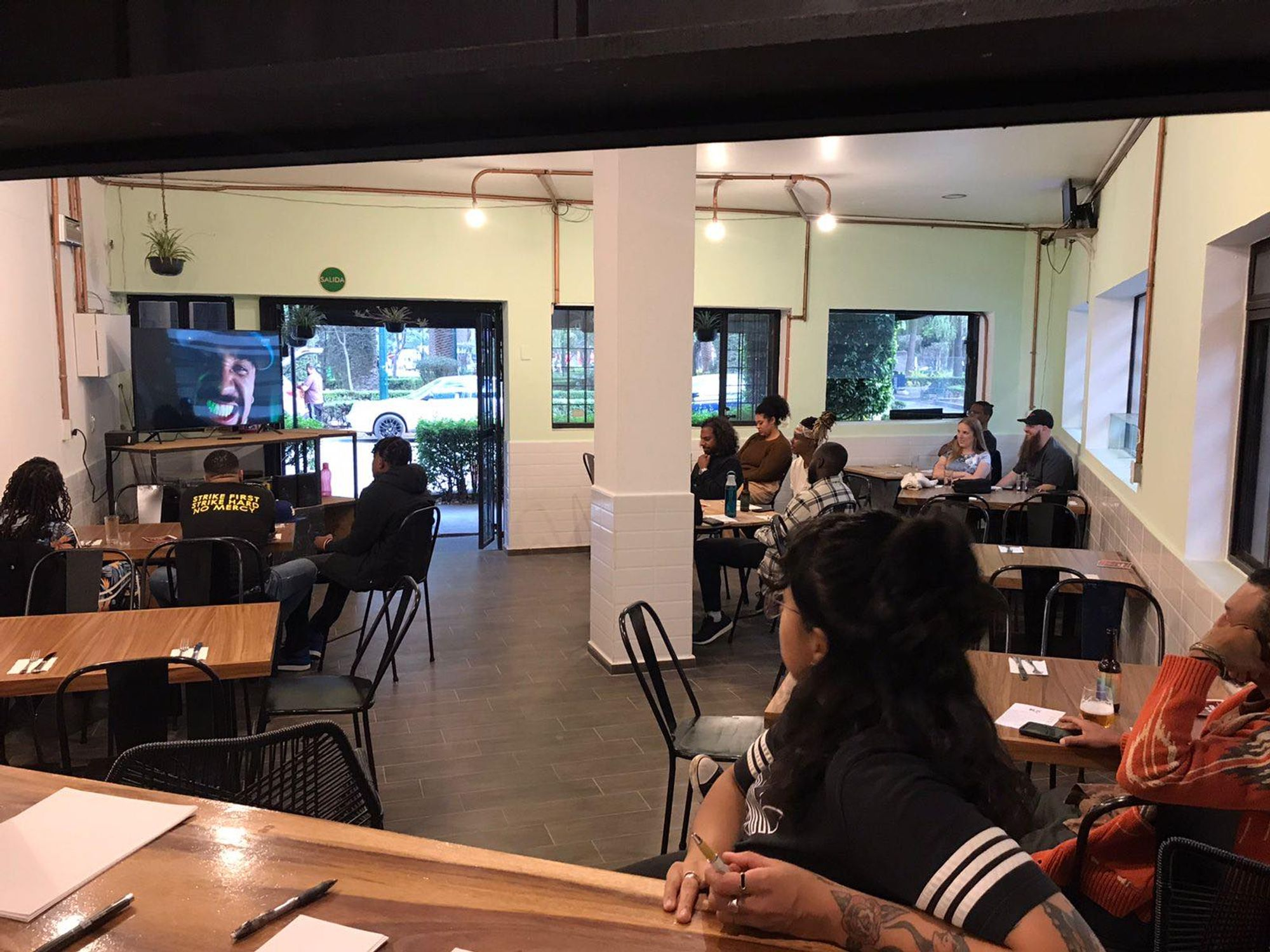121 min.
I had always thought thrifting was a cheap way to shop: I could buy a brand-name shirt at the Salvation Army for just a few dollars instead of spending twenty-five or more for a new one at a clothing store.
But one summer afternoon, on a walk down Broadway, a friend and I walked into a thrift store in New York City. It looked great from the outside, so why not take a look?
The store had a fairly stark layout, something I found unusual for a thrift store (I’ve always associated thrift stores with lots of islands, clothes shoved into any possible space they could find). A few rugs lay on the floor, a pair of hoodies and jeans hanging on a coat rack. A small display table. It looked more like an old-fashioned Ikea showroom.
I grabbed a t-shirt from the display table. I noticed small holes near the shoulder seam. They weren’t the kind you make to make a fashion statement: they were moth holes. With a little disgust I lowered the shirt again, but, curiously, I wanted to know how much it cost. I looked for the price tag, gestured to my friend, and showed it to her… Sixty dollars for a shirt with moth holes.
I knew previously that saving had become somewhat expensive, but I found it particularly impactful. Why has an inexpensive purchasing method become so expensive?
Shelley Steward of UC Berkeley conducted a study on secondhand shoppers in Portland, Oregon. She discovered that some second-hand shoppers seek economic value, whom she calls “thrift seekers” (Steward 462), while other shoppers go to such stores to avoid “mass fashion,” whom she calls “creativists” (462 ). This latter group, as Steward analyzed, shops at thrift stores to avoid common “commercial establishments” (462) in an effort to evade conventional shopping patterns (465). However, unlike “savings seekers,” this group is often made up of higher-earning individuals (462). But what drives “creativists” to avoid “mass fashion”? Steward suggests that these shoppers view secondhand shopping as “a reflection of creativity” (462) rather than a form of shopping for financial gain.
Based on research documented since 2013, Steward cites an increase in “privileged clientele” at thrift stores (460). I have come to think (leaving aside economic factors such as inflation) that saving has become a more expensive activity due to the “creativist” buyer. The effect of this can be seen throughout Toronto
Many thrift stores are “curated,” where stores edit their offering based on what they think is trending or will sell. If it can be shown as “modern”, they will try to sell it, even if it is moth-bitten. And of course, they’ll try to sell it for whatever amount the “creativist” buyer is willing to pay, which apparently can mean sixty dollars for a t-shirt.
I interviewed a friend of mine, Alessia. Thrifting has become a common way of shopping for Alessia: being a college student, she doesn’t necessarily want to spend hundreds on new clothes.
“I feel like at some point they can’t be considered thrift stores anymore because they’re too expensive for basic items,” she tells me. “So when there comes a point where something that’s supposed to be cheap isn’t cheap anymore, it’s sad… Because there’s nothing cheaper than the cheapest, so where do you go from there?”
The idea of saving had not always been a popular option. Used clothing was often sold by Jewish immigrants, which produced anti-Semitic ideas associated with the act of buying used clothing. The formation of thrift stores really began as a concept in the 19th century, with Christian churches that were affiliated with the Salvation Army and Goodwill. However, it was after the Great Depression that thrifting gained greater popularity: with greater demand than supply3 and great financial struggle, purchasing reused clothing for much less became a popular option.
However, with the somewhat recent rise in the “creativist” shopper, thrifting appears to have abandoned its original purpose: accessibility to clothing at a cost significantly less than the recommended retail price.
At the point where used and new prices coincide, the savings may seem counterintuitive. Thrifting had an incentive for sustainability: Instead of buying new clothes at retail prices, one could buy used or “upcycled” clothes for much less. But now, if the cost of getting a t-shirt from a thrift store is the same price as a new t-shirt from H&M, where is the financial incentive to purchase the most environmentally friendly option?
“That, I think, almost encourages people to shop in regular stores,” Alessia tells me. “Because if it’s going to be the same price anyway, you might as well get the item you like the most, unworn, right?”




